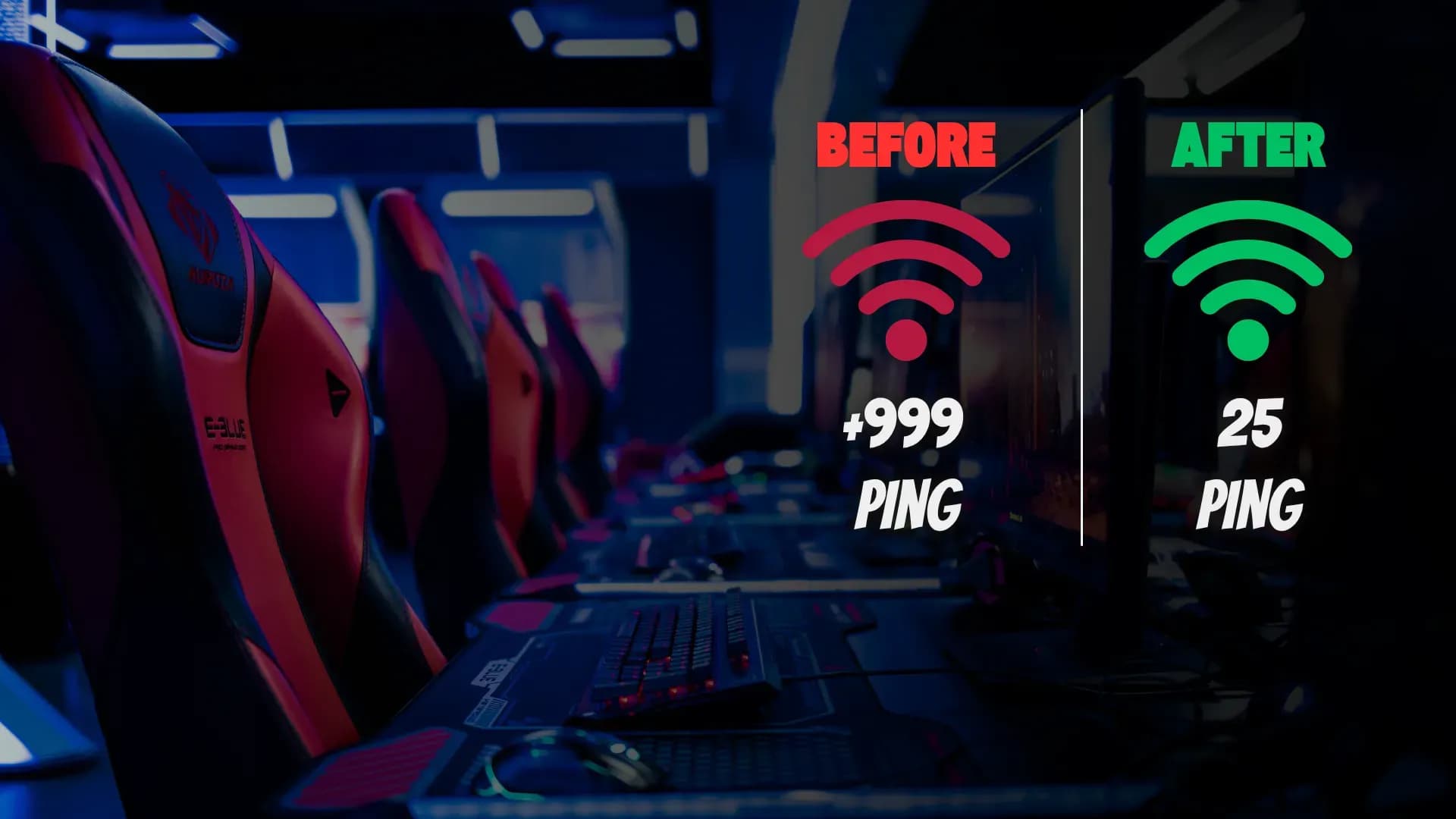guide
10 Effective Ways to Reduce High Ping and Lag
Published Date: 10/9/2025
Experiencing high ping and frustrating lag in games like Valorant, CoD, or Fortnite? Our guide provides 10 effective, easy-to-follow methods to fix your connection for smoother gameplay.

In the world of online gaming, victory and defeat are decided in milliseconds. There's nothing worse than lining up the perfect shot, only for your character to freeze (lag) or for your commands to register a second too late (high ping). For competitive games like Valorant, Call of Duty: Warzone, Fortnite, and League of Legends, a stable, low-ping connection is not just an advantage—it's a necessity.
But what exactly are ping and lag, and how can you fix them?
- Ping: The time it takes for a data packet to travel from your computer to the game server and back. It's measured in milliseconds (ms). A lower number is better (ideally under 60ms).
- Lag: The noticeable delay, stutter, or "rubber banding" you experience in-game, which is usually a symptom of high ping or packet loss.
If you're tired of losing fights to a bad connection, don't worry. This guide provides 10 proven methods to optimize your connection and achieve the smooth gameplay you deserve.
1. Switch to a Wired Connection (Ethernet)
This is the single most effective way to improve your connection stability. While Wi-Fi is convenient, it's susceptible to interference, signal drops, and fluctuations. An Ethernet cable provides a direct, stable line from your PC or console to your router, ensuring the fastest and most consistent connection possible.
2. Restart Your Modem and Router
The classic "turn it off and on again" solution works for a reason. Your modem and router can slow down over time as their internal cache fills up. Unplug both devices, wait for 30 seconds, and then plug them back in. This "power cycle" can resolve many temporary connection issues.
3. Close Bandwidth-Hungry Background Applications
You might not be the only thing using your internet. Other applications running on your PC can consume a significant amount of bandwidth. Before you launch a game, make sure to completely close:
- Video streaming services (Netflix, YouTube)
- Large file downloads or torrent clients
- Cloud backup services (OneDrive, Google Drive)
- Other game clients downloading updates (Steam, Epic Games)
4. Choose the Correct Game Server Region
Most online games allow you to select a server region. To get the lowest possible ping, always choose the server that is geographically closest to you. If you are in Europe, connecting to a "North America" or "Asia" server will add hundreds of milliseconds to your ping simply due to physical distance.
5. Change Your DNS Settings
Your Internet Service Provider's (ISP) default DNS servers aren't always the fastest. Switching to a popular public DNS can sometimes improve your connection speed and reliability. Two of the best options are:
- Google DNS: 8.8.8.8 and 8.8.4.4
- Cloudflare DNS: 1.1.1.1 and 1.0.0.1
6. Update Your Network Drivers (For PC Gamers)
Outdated network drivers on your PC can lead to poor performance and connection problems. Visit the website of your motherboard or network card manufacturer to ensure you have the latest drivers installed.
7. Optimize Your Wi-Fi Connection
If using an Ethernet cable isn't an option, you can still optimize your wireless signal. Try moving your setup closer to the router, ensure there are minimal walls or large objects between you and the router, and switch to your router's 5GHz band if available, as it is generally faster and less congested than the 2.4GHz band.
8. Talk to Your Internet Service Provider (ISP)
If you've tried everything and your connection is still slow, the problem might not be on your end. Run an internet speed test and compare the results to the plan you're paying for. If the numbers don't match up, contact your ISP to see if there's an issue with your line or in your area.
9. Configure Quality of Service (QoS)
This is a more advanced tip. Many modern routers have a QoS setting that allows you to prioritize internet traffic for specific devices or applications. By setting your gaming PC or console as a high-priority device in your router's settings, you ensure that it gets the bandwidth it needs, even if other people in your house are streaming videos or browsing the web.
10. Avoid Using a General-Purpose VPN
While some specialized "gaming VPNs" claim to improve routing, a standard VPN almost always increases your ping. It adds an extra step, routing your traffic through another server before it reaches the game server. For the best performance, make sure your VPN is turned off while gaming.
Enjoy a Lag-Free Gaming Experience
By following these steps, you can take control of your connection and significantly reduce high ping and lag. Now that your connection is optimized and ready for competitive action, it's time to gear up.
Enhance your experience in your favorite games by grabbing the latest skins and battle passes. Top up your account balance with Steam Wallet Codes, or browse our store for PC Game Keysand other gift cards. Game on!